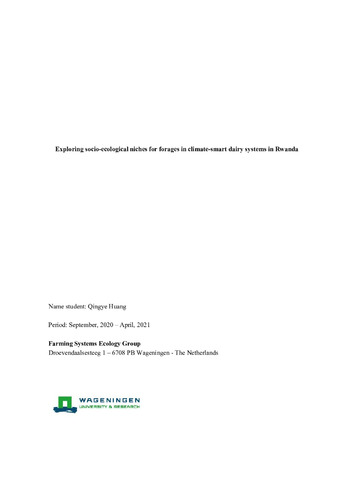Exploring socio-ecological niches for forages in climate-smart dairy systems in Rwanda
Land scarcity and seasonal feed deficit are the main constraints to increase milk productivity in croplivestock systems in Rwanda. Improved forage technologies can not only narrow the feed gap during the dry season, but also contribute to the reduction of enteric methane emissions. There are various forage technologies on hand but the adoption often remains low because they might not fit into the respective contexts. In this study, we used farming systems characterization and the agro-ecological and socio-economic characteristics of the forage technologies to quantitatively evaluate their suitability in socio-ecological niches in three agroecological zones in Rwanda. Impacts on milk yield and enteric methane emission for scenarios of grass and legume integration in banana fields were simulated through the Ruminant model. Forage-niche matching results show that the variation in socio-ecological suitability is largely determined by the household’s labour and land availability, income, and the yield of the forage. In comparison to other plants, Pennisetum purpureum had a fairly consistent high score across all niches. Desmodium intortum had high average scores in the three sites, while Brachiaria brizantha had the lowest scores. The Ruminant model results further confirmed the impacs of matching forages to a socio-ecological niche. Integrating forages in the socio-ecological niches had raised average milk production from 2.8 l/day to 3.9 l/day when matching with grass, and to 4.2 l/day with legume. At the same time, enteric methane emission intensity reduced from 83.7 l CH4/l milk to 44.8 l CH4/l milk and 40.3 l CH4/l milk respectively. The study has provided a method for operationalizing the socioecological niche concept on matching forages to the niches. It further showed that improving livestock diets through matching forages to the socio-ecological niches can increase milk yield while reducing enteric methane produced per liter of milk.

